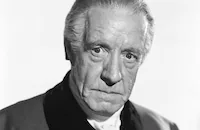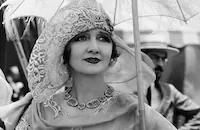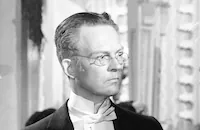Men Must Fight

Brief Synopsis
Cast & Crew
Edgar Selwyn
Diana Wynyard
Lewis Stone
Phillips Holmes
May Robson
Ruth Selwyn
Film Details
Technical Specs

Synopsis
Just before her lover of three days, Lieutenant Geoffrey Aiken, is to leave on his first World War I flying mission, Laura, a military nurse, accepts his marriage proposal and pledges her undying love. After confiding her romance to Edward "Ned" Seward, an older officer who also wants to marry her, Laura discovers Geoffrey dying from battle injuries in her ward. Unable to cope with the stress of Geoffrey's death and her impending motherhood, Laura is transferred to another hospital and eventually accepts the proposal of the devoted Ned. In 1940, Bob Seward, Laura's son, whom Ned has reared as his own, returns to New York City from Europe, where he has earned a degree in chemical engineering, eager to introduce his fiancée, Peggy Chase, to his parents. Although Peggy is nervous about meeting Ned, now the Secretary of State, and his socially prominent wife, Bob reassures her that she will be welcomed into the family. While Laura and Ned embrace their future daughter-in-law, Peggy's mother explodes at Bob when he criticizes her for defending the absolute sanctity of the American flag. Soon after, Ned learns that, in spite of his recent international peace treaty negotiations, the United States has sent ships to Eurasia in anticipation of war. Laura, an avowed pacifist, begs with Ned to resign his post in protest of his president's actions, but Ned refuses to quit and leaves for Washington, D.C. While news of Eurasian troop mobilization spreads across the country, Laura starts a desperate peace movement, which is founded on the idea that no mother should be forced to send her young son into battle to fight an old man's war. In spite of Ned's embarrassment about her pacifist activities, Laura agrees to speak at a massive rally, which is to be televised publicly. Angered by Laura's anti-war speech, a group of men crash the rally and instigate a vicious brawl, which eventually leads to a mob attack on the Sewards' penthouse. To soothe the rock-throwing crowd, Ned appears on the balcony with Peggy's brother Steve, a uniformed soldier, and vows that, if war is declared, all of the Sewards will do their patriotic duty. Ned then tells a reporter that Bob is going to accept a commission to engineer chemical weaponry, a claim that outrages both Bob and Laura. Although Peggy questions his courage and breaks her engagement with him, Bob maintains his pacifist convictions. When Ned hears of Bob's decision, he angrily tells Bob that he is not a natural Seward and rejects his adopted son as a coward. Laura then explains to Bob about Geoffrey and how he died a hero's death. Seeing her son's subsequent confusion and loneliness, Laura goes to the Chases' home and begs Peggy to hear the story of Bob's past. While Laura and Peggy are driving back to the Sewards' home, a fleet of Eurasian airplanes begins an aerial attack on the city. Laura is wounded during the bombardment, and Ned learns that 12,000 American pilots have already died, victims of the enemy's gas warfare. Sobered by these statistics, Ned backs down on his chemical warfare policy, but learns that Bob has enlisted as a flyer. Although frightened for both her son and herself, Laura accepts Bob's enlistment, then with the now married Peggy, proudly watches him fly away to war.

Director
Edgar Selwyn
Cast

Diana Wynyard

Lewis Stone

Phillips Holmes

May Robson

Ruth Selwyn

Robert Young
Robert Grieg

Hedda Hopper

Donald Dilloway

Mary Carlisle
Luis Alberni
Richard Tucker
Crew

Videos
Movie Clip



Film Details
Technical Specs

Articles
Men Must Fight (1933)
Jay Carr

Men Must Fight (1933)
Quotes
Trivia
Notes
The working title of this film was What Women Give. In addition to television, video telephones are used as props in the "futuristic" section of the film.














